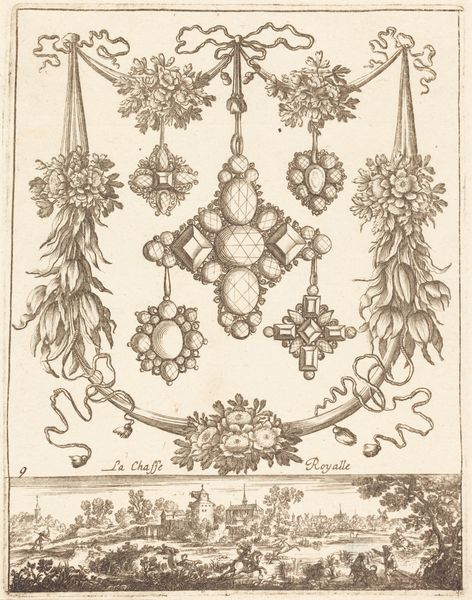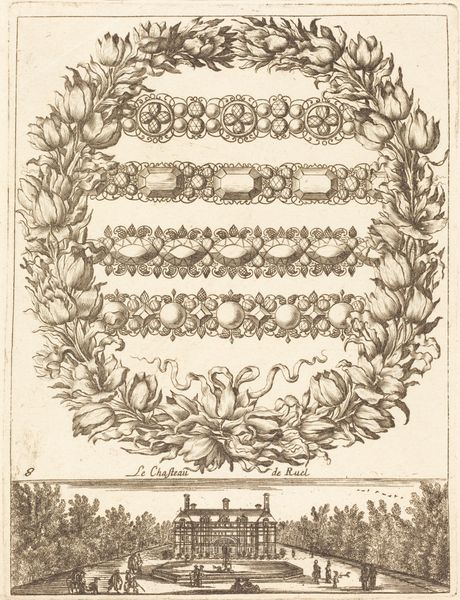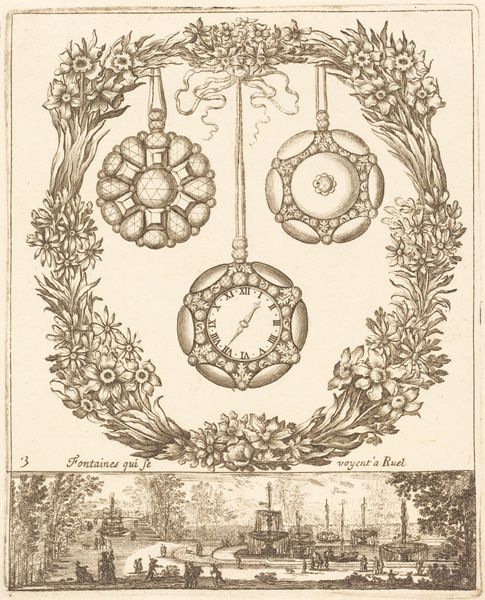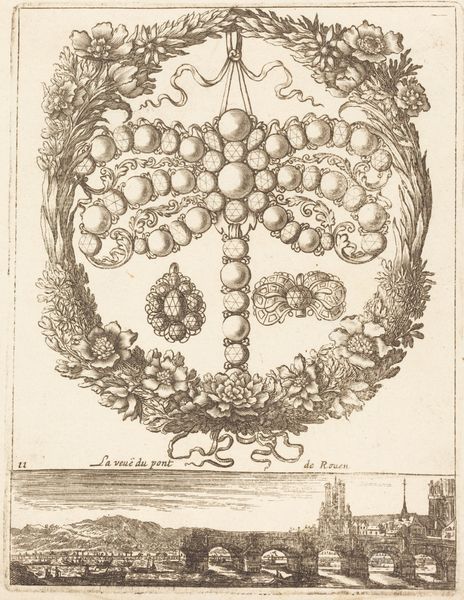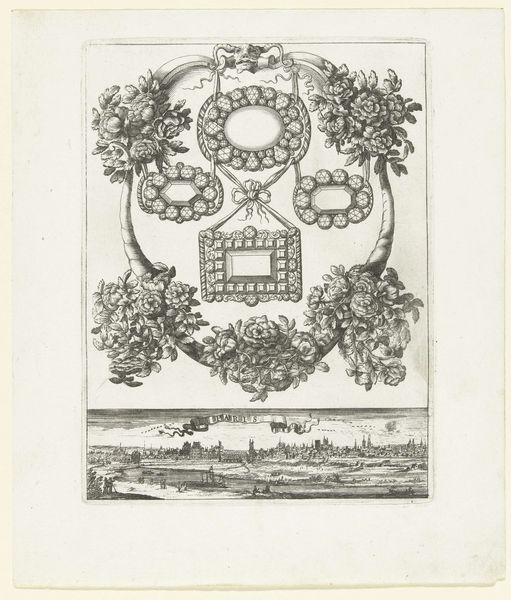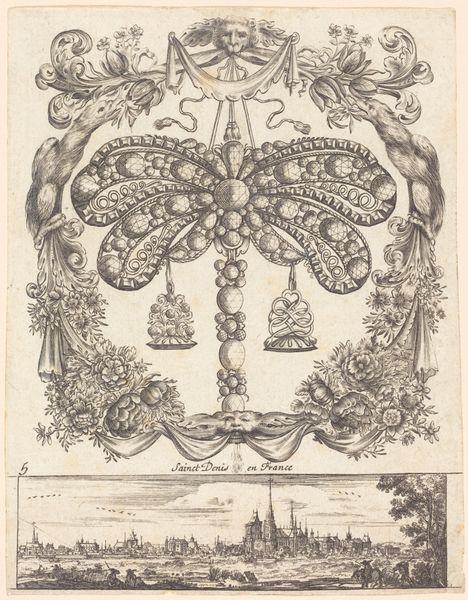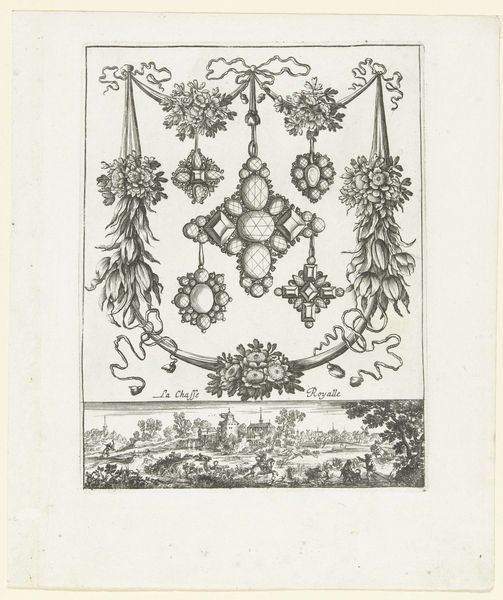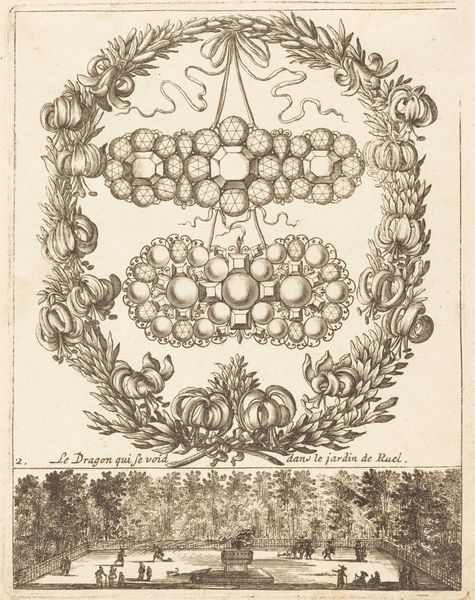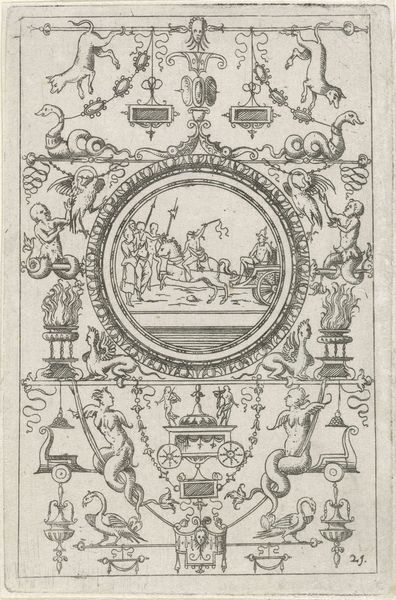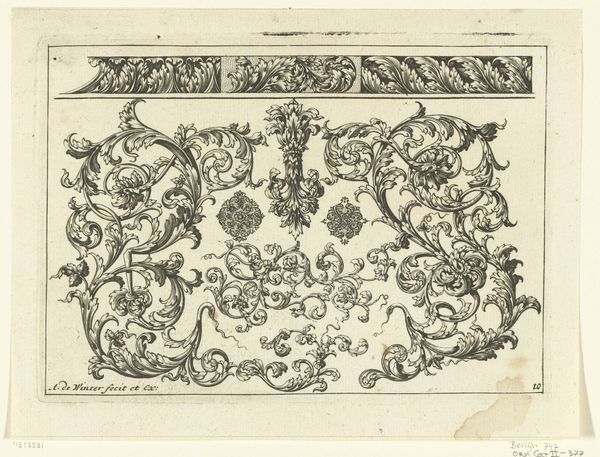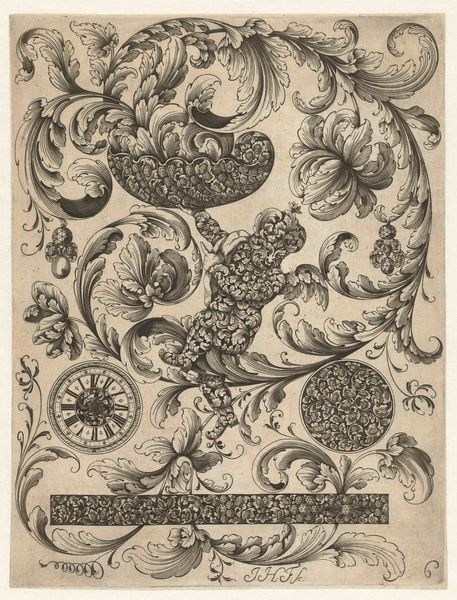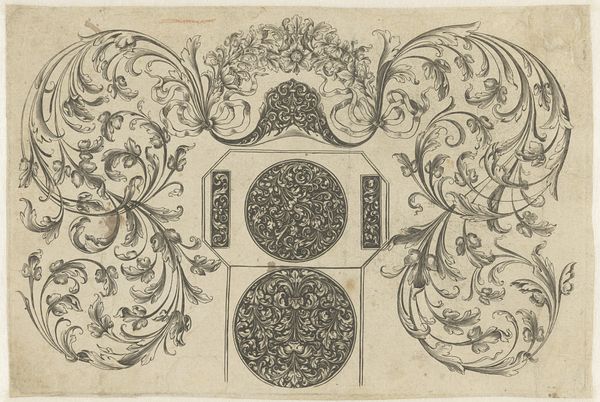
drawing, print, engraving
#
drawing
#
baroque
#
pen drawing
# print
#
landscape
#
geometric
#
line
#
cityscape
#
engraving
Copyright: National Gallery of Art: CC0 1.0
Curator: Let’s take a look at François Le Febvre's "Paris," circa 1665, rendered as an engraving. Editor: It strikes me immediately as ornate, almost excessively so. The composition feels like a celebration, with that lower cityscape juxtaposed to what feels like a florid memorial. Curator: Floral motifs and complex geometric frameworks were potent signifiers in Baroque art, speaking to opulence and structured order simultaneously. Look how those botanical garlands intertwine with the jeweled cartouches. Editor: Exactly, but these geometric forms don’t only signify order. Consider the frames within frames; these cartouches suggest layered perspectives, implying enclosures—almost as though a desire to keep, capture, or literally enframe the landscape shown below. Curator: Interesting, the garland surrounding the landscape would speak of enduring memory and celebration of civic pride. It speaks of permanence when the frames surrounding them may hint at the fleeting present, acting like visual mnemonic devices used as allegorical tributes to the grandeur of the city depicted in the horizon below. Editor: I'm curious about the technique itself. The use of line is very deliberate; thin lines versus thicker areas, darker shades give way to lighter spaces across all objects giving it a layered depth. It does feel both carefully controlled, yet free. Curator: The fine engraving enables such precision in detail, aligning the city plan into focus and emphasizing Le Febvre's focus on detail and clarity for both his art and historical subject matter, creating visual dialogue between earthly and ideal realms. It certainly creates continuity, even if the emotional impact feels... restrained. Editor: Perhaps restraint is itself part of the message. The work may be signaling to honor a highly valued past and an equally measured view into the future for viewers across generations who seek knowledge about it as artwork alone, even separate from "Paris". Curator: Yes. A visual repository as well as historical snapshot in the 17th century mindset! Editor: Ultimately it serves to illuminate not just a city, but its symbolic representation, reminding us of both its material presence and conceptual existence.
Comments
No comments
Be the first to comment and join the conversation on the ultimate creative platform.
